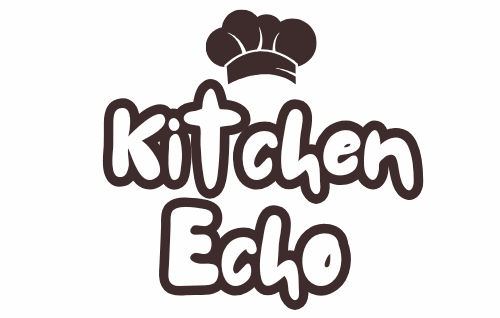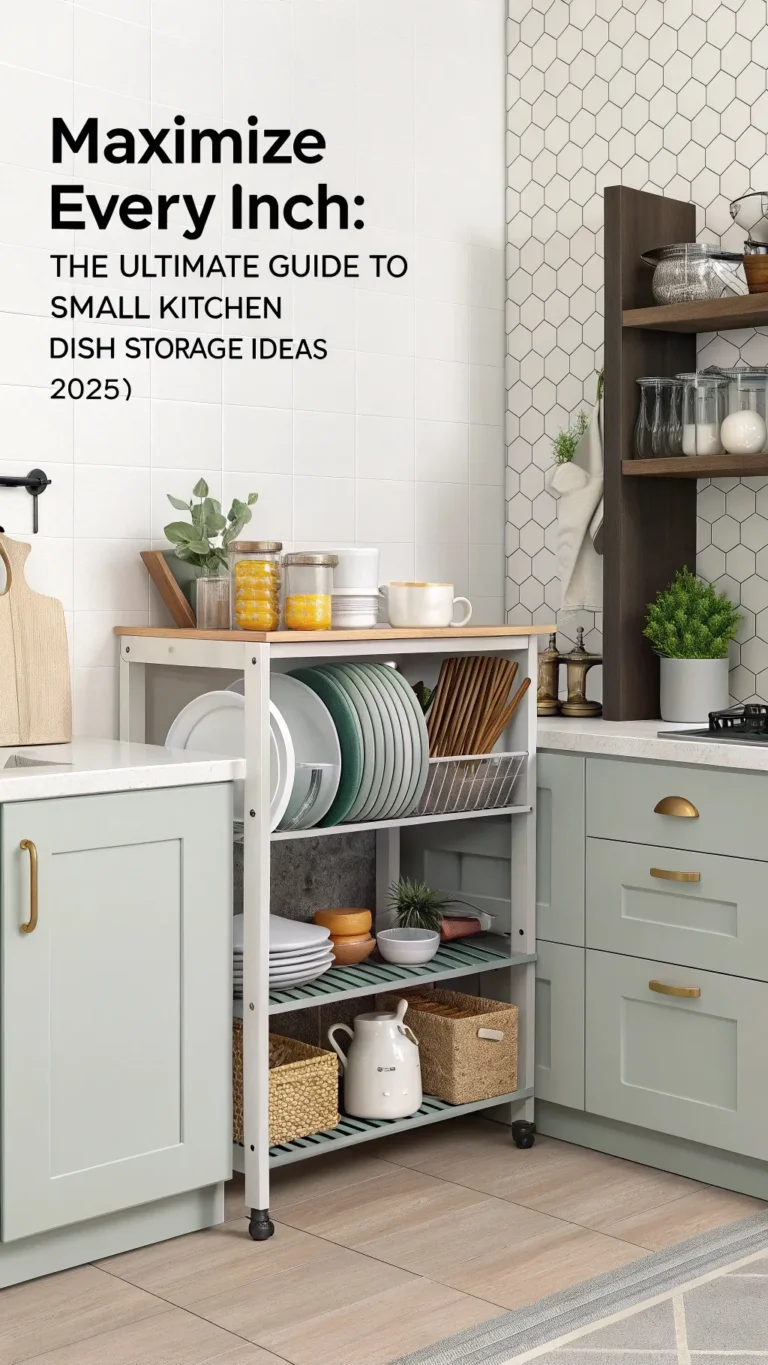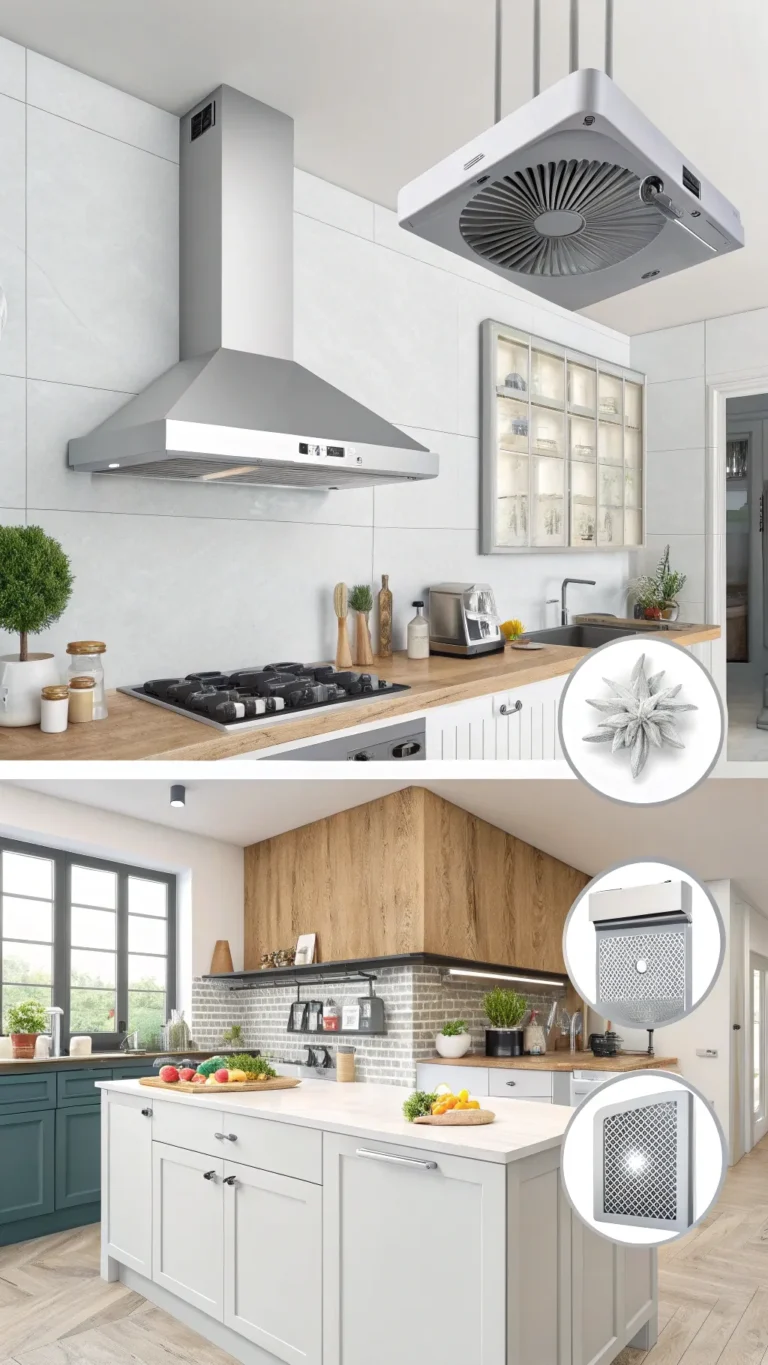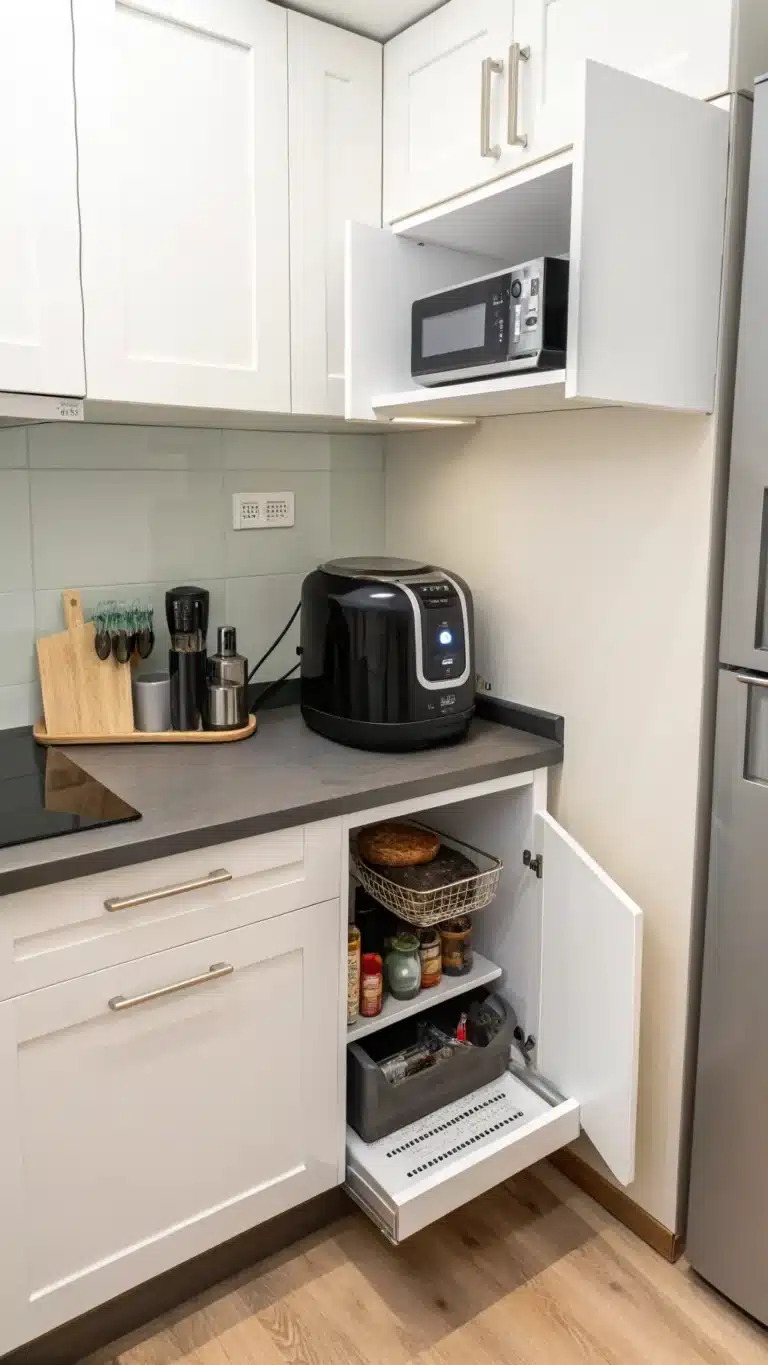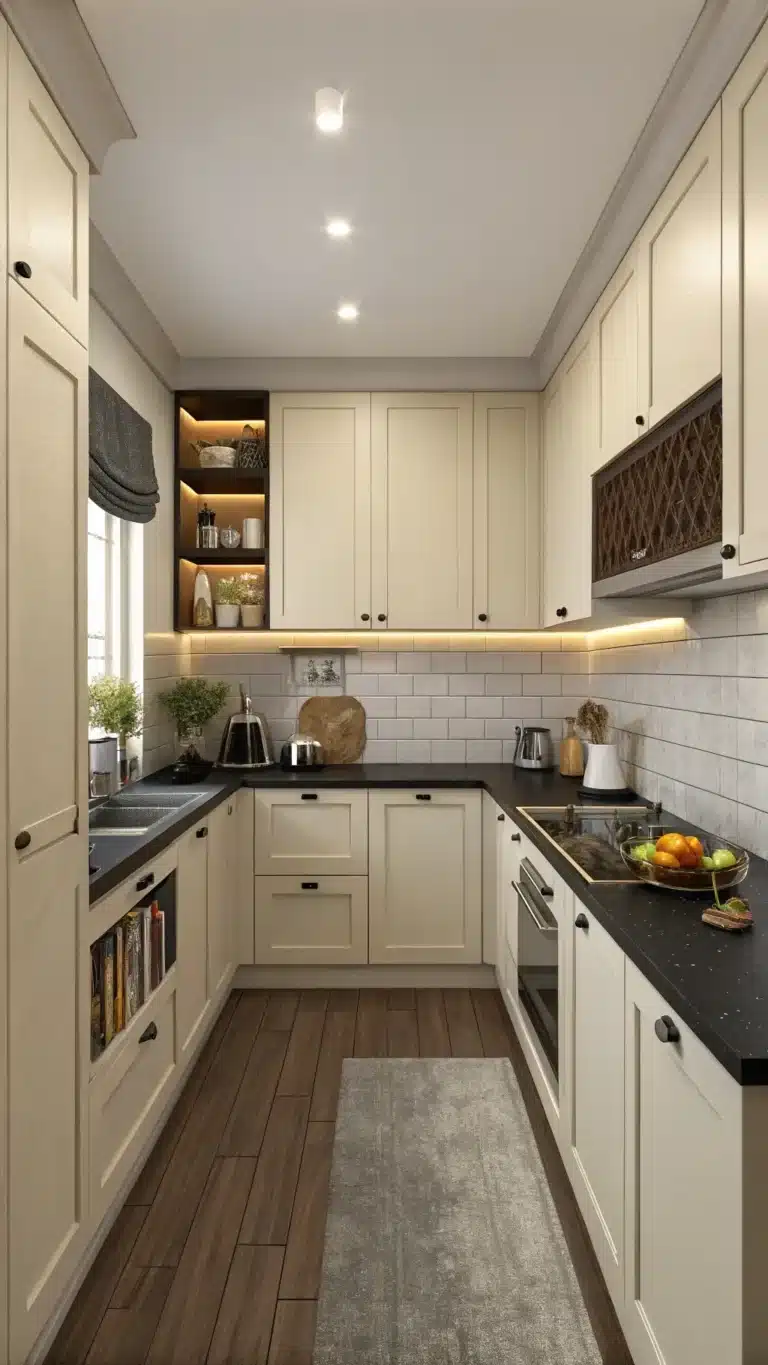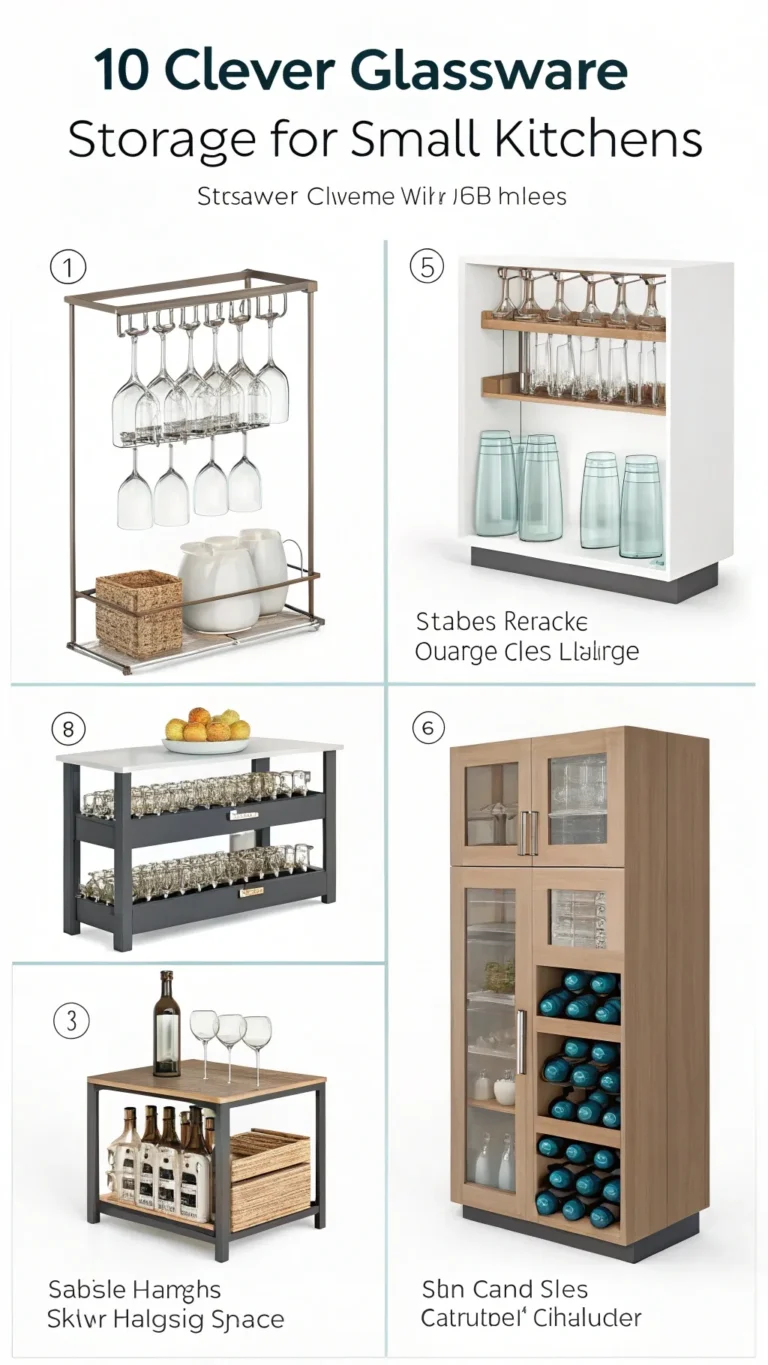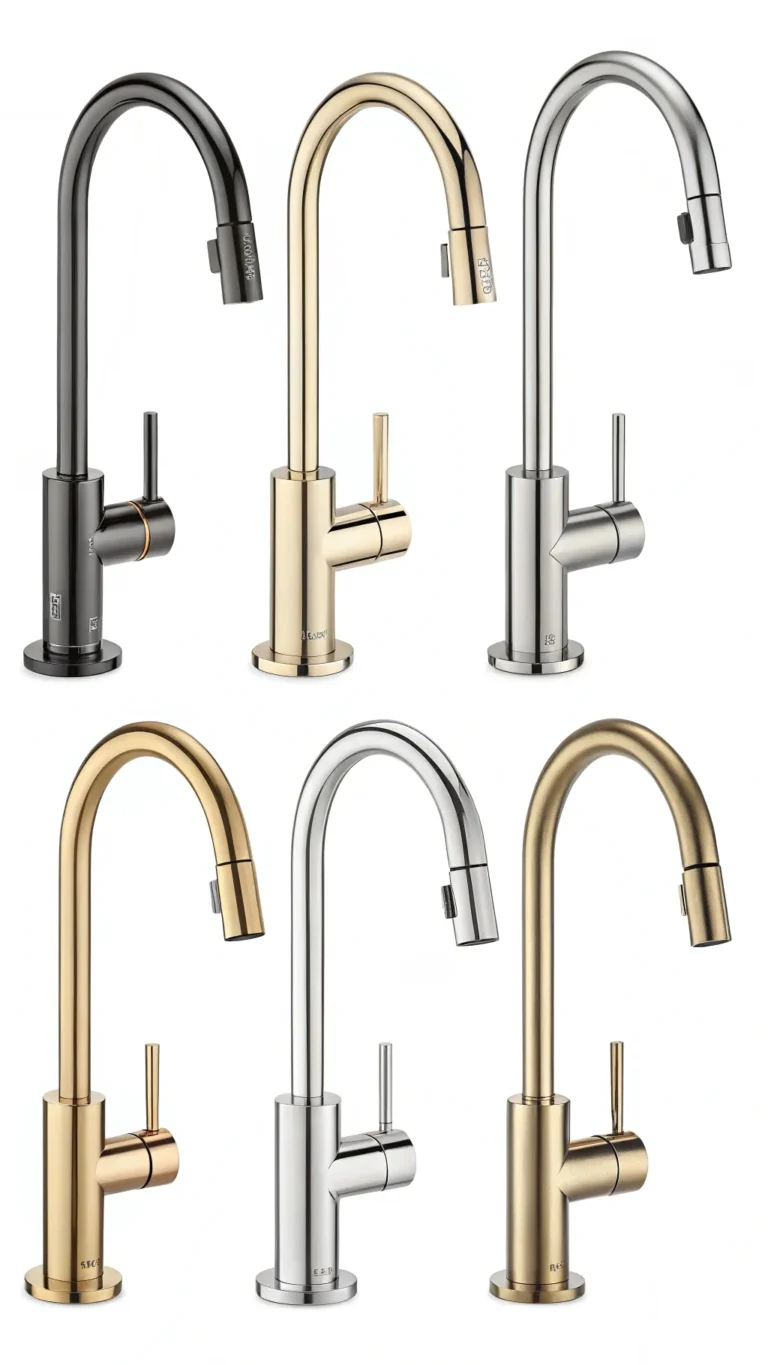Introduction
Small kitchens come with unique challenges. Every choice counts in a limited space. The floor is more than a base; it affects how the room feels and functions. A wrong choice can lead to frustration and expenses. Finding the right floor means balancing style, durability, and cost.
This guide covers the best small kitchen flooring options. We explore materials like vinyl plank, tile, hardwood, cork, and more. Each option features details on durability, water resistance, price, and ease of installation. Knowing these factors helps you pick flooring that fits your space and lifestyle.
Small kitchen flooring options may seem overwhelming. Let’s break down what works best for compact areas.
Why Flooring Matters in a Small Kitchen
Flooring affects how big or small a kitchen feels. Light colors reflect more light, making a room appear larger. Patterns and material textures also play a role. For example, wide planks can create a sense of space, while busy patterns might make a room feel cramped.
Functionality stands out in small kitchens. The work zone tends to be compact but busy. This means the floor faces high foot traffic and frequent spills. The floor needs to handle wear without losing appearance. Durable, water-resistant surfaces protect your investment.
Safety cannot be ignored. Kitchens get wet, and spills happen often. Slip-resistant floors keep family and guests safe. Comfort matters too, especially when standing long hours cooking. A floor with some softness or warmth helps ease tiring feet.
Budget is another piece. Flooring costs add to kitchen renovations. Some materials offer great value and look expensive; others cost more upfront but last longer. Consider installation too. DIY-friendly floors save money.
Sustainability trends grow in 2025. People seek materials that are eco-friendly or made from recycled content. Flooring companies respond with options that combine durability with green credentials.
Key Factors to Consider When Choosing Flooring for a Small Kitchen
Select flooring based on what fits your home and habits. Durability is critical. Small kitchens see daily action, so floors must resist scratches and dents. Some materials handle heavy use better, like tiles or vinyl.
Water resistance tops the list. Small kitchens face spills, steam, and humidity. Waterproof materials like LVP or ceramic tile prevent damage and mold growth.
Cost varies widely. Flooring prices range from low to high. Also, factor in installation fees or the DIY effort required. Some materials install easily, reducing overall cost.
Cleaning ease saves time. Floors with smooth surfaces or fewer grout lines require less effort. Consider what cleaning tools and products you prefer.
Style adds personality. Floors complement kitchen decor. Lighter tones open space visually. Flooring patterns can add movement or calm.
Comfort underfoot impacts kitchen chores. Softer floors like cork or cushioned vinyl reduce strain.
DIY potential matters if you plan to install yourself. Click-lock systems and sheet vinyl offer simpler projects.
Finally, light reflection affects room brightness. Glossy surfaces bounce more light; matte finishes create soft looks. Choose what matches your lighting and mood.
The Top 10 Small Kitchen Flooring Options: Detailed Breakdown
1. Luxury Vinyl Plank (LVP) / Luxury Vinyl Tile (LVT)
Luxury vinyl plank (LVP) mimics wood floors, while LVT looks like tile. Both provide water resistance, durability, and style versatility. These floors are popular among small kitchen owners.
Pros: Waterproof; wide styles; click-lock DIY install; comfortable underfoot; affordable to mid-range; hides scratches well. Great for spills and stains.
Cons: Quality varies; prone to dents from heavy furniture; not eco-friendly; limited repair options.
Cost Range: $2 to $5 per sq ft.
DIY Suitability: High. Many homeowners handle installation themselves.
Maintenance Tips: Wipe spills promptly; use gentle cleaners; add soft pads under heavy furniture.
Alt Text Suggestion: Luxury vinyl plank flooring in small kitchen.
2. Sheet Vinyl
Sheet vinyl is a continuous sheet offering seamless protection. Its water resistance makes it a budget-friendly choice for small kitchens.
Pros: Fully waterproof; easy to clean; low cost; fairly easy to install for small spaces; quiet underfoot.
Cons: Can puncture or tear; seams lesser concern in smaller rooms; style options less realistic; subfloor imperfections show easily.
Cost Range: $1 to $3 per sq ft.
DIY Suitability: Moderate, best for small kitchens.
Maintenance Tips: Avoid sharp objects; clean with mild detergents; avoid harsh chemicals.
Alt Text Suggestion: Sheet vinyl flooring in small kitchen.
3. Ceramic or Porcelain Tile
Tile remains a top choice. It offers durability, water resistance, and a wide range of designs, perfect for small kitchens.
Pros: Highly durable; water and stain resistant; dozens of style options; larger tiles reduce grout lines, enhancing space appearance.
Cons: Grout needs regular sealing; can feel cold or hard; complex installation; professional help often needed.
Cost Range: $3 to $10 per sq ft.
DIY Suitability: Low to moderate, depends on skill.
Maintenance Tips: Seal grout yearly; clean grout lines; avoid dropping heavy items.
Alt Text Suggestion: Porcelain tile flooring for small kitchen.
4. Laminate Flooring
Laminate mimics wood or stone with a protective top layer. Modern laminates include water-resistant cores, suitable for kitchens.
Pros: Affordable; wide style choices; scratch resistant; easy click-lock install; some water resistance.
Cons: Susceptible to swelling in standing water; edges vulnerable; not fully waterproof in standard types; can be slippery when wet.
Cost Range: $2 to $5 per sq ft.
DIY Suitability: High, many DIY guides available.
Maintenance Tips: Clean spills quickly; avoid soaking floor; use soft mop or cloth.
Alt Text Suggestion: Laminate flooring in small kitchen.
5. Engineered Hardwood
Engineered hardwood shows real wood on top with layers below for moisture control. It balances beauty and some water resistance.
Pros: Authentic look; adds home value; more stable than solid hardwood; warm and inviting.
Cons: Less water-resistant than vinyl or tile; scratches easily; needs professional installation; moderate to high price.
Cost Range: $4 to $10 per sq ft.
DIY Suitability: Low for beginners.
Maintenance Tips: Use wood cleaner; wipe spills quickly; avoid excessive moisture.
Alt Text Suggestion: Engineered hardwood floor in small kitchen.
6. Solid Hardwood
Classic wood floors provide warmth and charm but pose moisture risks in kitchens.
Pros: Timeless; can be refinished; long-lasting with care; high resale value.
Cons: Vulnerable to water damage; expansion/contraction issues; expensive; professional install required.
Cost Range: $5 to $12 per sq ft.
DIY Suitability: Low.
Maintenance Tips: Immediate spill cleanup; use rugs near sink; regular refinishing needed.
Alt Text Suggestion: Solid hardwood flooring small kitchen.
7. Cork Flooring
Cork offers a unique, soft surface. It insulates sound and warmth well, making kitchens cozy.
Pros: Eco-friendly; soft and comfortable; natural antimicrobial; good insulation.
Cons: Can dent; water damage risk if unsealed; needs resealing; limited colors.
Cost Range: $3 to $8 per sq ft.
DIY Suitability: Moderate, click-lock options exist.
Maintenance Tips: Seal yearly; clean spills fast; avoid harsh cleaners.
Alt Text Suggestion: Cork flooring small kitchen.
8. Bamboo Flooring
Bamboo is a sustainable wood alternative. Strand-woven bamboo stands out for strength and looks.
Pros: Environmental choice; durable; stylish; adds warmth.
Cons: Water sensitive; quality varies; requires regular sealing; professional install recommended.
Cost Range: $3 to $7 per sq ft.
DIY Suitability: Low to moderate.
Maintenance Tips: Clean spills immediately; use sealant; avoid standing water.
Alt Text Suggestion: Bamboo flooring in small kitchen.
9. Polished Concrete
Concrete brings a modern feel with durability. Polishing enhances shine and smoothness.
Pros: Extremely durable; low maintenance; stainable; seamless surface; modern look.
Cons: Hard and cold underfoot; slippery if not treated; expensive for existing floors; specialists needed.
Cost Range: $5 to $15 per sq ft.
DIY Suitability: Low, needs professionals.
Maintenance Tips: Use non-slip treatments; clean regularly; avoid harsh chemicals.
Alt Text Suggestion: Polished concrete floor small kitchen.
10. Linoleum
Linoleum is made from natural materials, offering eco-friendly durability and colors.
Pros: Durable; water-resistant; antimicrobial; colors through material; renewable source.
Cons: Requires sealing; can yellow with age; damaged by some cleaners; needs expert install.
Cost Range: $3 to $7 per sq ft.
DIY Suitability: Moderate to low.
Maintenance Tips: Seal every few years; clean gently; protect from direct sunlight.
Alt Text Suggestion: Linoleum flooring small kitchen.
Comparing the Options: A Quick Look
| Flooring Type | Durability | Water Resistance | Cost Range ($/sqft) | DIY Suitability | Maintenance Level | Best For |
|---|---|---|---|---|---|---|
| Luxury Vinyl Plank (LVP) | High | Waterproof | 2 – 5 | High | Low | Budget, Waterproof |
| Sheet Vinyl | Moderate | Waterproof | 1 – 3 | Moderate | Moderate | Cheap, Seamless |
| Ceramic/Porcelain Tile | Very High | Waterproof | 3 – 10 | Low | High | Style variety, Durable |
| Laminate Flooring | Moderate | Water-Resistant | 2 – 5 | High | Moderate | Affordable, Style |
| Engineered Hardwood | Moderate | Some Resistance | 4 – 10 | Low | Moderate | Wood look, Value |
| Solid Hardwood | High | Low | 5 – 12 | Low | High | Classic Beauty |
| Cork Flooring | Moderate | Requires Sealing | 3 – 8 | Moderate | Moderate | Comfort, Eco-friendly |
| Bamboo Flooring | Moderate | Requires Sealing | 3 – 7 | Low to Moderate | Moderate | Sustainable, Durable |
| Polished Concrete | Very High | Waterproof | 5 – 15 | Low | Low | Modern, Durable |
| Linoleum | High | Water-Resistant | 3 – 7 | Moderate | Moderate | Eco-friendly, Durable |
Using this table can narrow choices quickly based on budget, installation skill, and kitchen condition.
Choosing the Right Flooring for Your Small Kitchen
Assess your daily kitchen use. Consider kids, pets, and cooking habits. A heavy-use kitchen needs harder flooring.
Note your budget honestly. Factor in cost of material plus installation. DIY options save money but may limit material choices.
Think through your DIY skills. Certain floors suit beginners; others call for pros.
Decide what style fits your kitchen design. Light floors open small spaces visually. Pattern or texture adds interest but can make rooms feel busy.
Evaluate top priorities. Does water resistance top your list, or comfort? Maybe durability matters most?
Request samples. Place them in your kitchen area to see them in daylight and artificial light.
Consider your subfloor. Some materials demand smooth, level subfloors, while others tolerate more imperfections.
Maintenance and Longevity Tips
Clean spills immediately to prevent damage. Use rugs or mats near entrances and sinks. Place furniture pads under chair and table legs.
Tile grout requires sealing yearly. Cork and bamboo need resealing every couple of years. Vinyl and laminate clean easily with gentle products.
Proper care boosts floor life. This is vital in a small kitchen where wear concentrates in small zones.
People Also Ask (FAQs)
Q1: What color flooring makes a small kitchen look bigger?
Lighter colors like white, pale wood, and light gray reflect light. They open space visually. Wide planks or large tiles reduce visual clutter.
Q2: What is the most durable flooring for a kitchen?
Porcelain tile and polished concrete top the list. High-quality luxury vinyl plank follows closely, combining durability with comfort.
Q3: Is laminate flooring good for a small kitchen?
Water-resistant laminates work well. Standard laminates risk water damage. Quick spill cleanup is essential.
Q4: Can I install kitchen flooring myself to save money?
Yes. LVP with click-lock and sheet vinyl suit DIYers. Tile and concrete often need professionals.
Q5: How important is waterproofing in a small kitchen floor?
Very important. Kitchens face spills and humidity. Waterproof floors protect subfloors and prevent mold.
Conclusion
Choosing small kitchen flooring options means balancing style, function, and budget. Each material serves different needs, from affordable vinyl to elegant hardwood.
Consider how you use your kitchen, your budget, and your installation comfort. Lighter colors and water-resistant features often benefit small kitchens most.
Share your flooring projects and tips below. Explore our related guides for kitchen layouts and paint colors to make your space shine.
Small kitchen flooring options exist for every taste and wallet. Take your time to pick one you’ll love.
